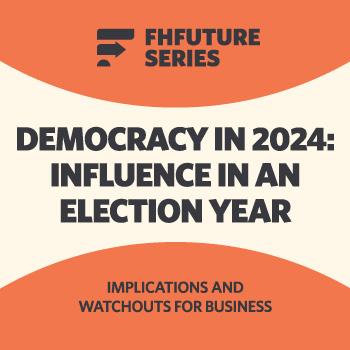Gen Z and Body Image: Four Things All Brands Should Consider
 We live in a hyper visual world. Fuelled by the likes of Instagram and TikTok, it’s hard to escape the constant stream of messaging that in one moment tells us to embrace our curves, celebrate cellulite, and show off our acne scars, and in the next moment makes us feel ashamed that we don’t look like supermodels in athleisure wear.
We live in a hyper visual world. Fuelled by the likes of Instagram and TikTok, it’s hard to escape the constant stream of messaging that in one moment tells us to embrace our curves, celebrate cellulite, and show off our acne scars, and in the next moment makes us feel ashamed that we don’t look like supermodels in athleisure wear.
The tension between realism and idealism when it comes the depiction of healthy bodies online is having a critical impact on the wellbeing of young people today. And there’s increasing pressure on brands to get their messaging right and avoid the common pitfalls that are feeding a growing body image crisis. While it’s fair to say that there’s no winning formula, there are a few starting points that all brands should consider when communicating about health and body image to Gen Z audiences:
- Be trend aware, not trend led: Keeping a finger on the trend pulse is a key part of understanding your industry landscape and identifying new ways to engage and stay relevant with your target consumer. However, it’s important that you don’t lose sight of the values, purpose, and personality on which your brand is built. Before jumping on the next big thing, ask yourself – do
 es this trend compliment your brand’s core purpose, or does it conflict with it? Not every new trend will present you with an opportunity, and that’s ok.
es this trend compliment your brand’s core purpose, or does it conflict with it? Not every new trend will present you with an opportunity, and that’s ok. - Listen and learn: You can learn so much from simply listening to your customers and observing how they communicate on the topic of health, beauty, and body image. Social media has enabled two-way communication between brand and consumer in a way that was never possible before. Ask the question – what do my customers want to hear from us? How do they talk about their health and appearance? What sensitivities do I need to be aware of? This is the best place to start when building your communications strategy.
- Diversify your inner circle: It’s fair to say that the more diverse your team is, the more diverse and representative your outputs will be. Promoting positive body image is not a one-size-fits-all, so before you deploy external messaging or imagery, take the time to engage with wider team members and your agency partners to ensure the decisions you’re making are appropriate and representative of your intended audience.
- Lean into independent expertise: Gen Z are no stranger to misinformation. There is no-end to the health advice readily available to them online, however the challenge is in sorting fact from fiction. Before you deploy new messaging, particularly regarding sensitive topics such as weight loss or aesthetics, consider who your target audience would consider a credible and trusted source of information. It might be a non-profit organisation, healthcare professional, an influencer, or a member of the public with lived experience. You might want to leverage them as brand or independent spokespeople, or simply engage with them for strategic counsel. Either way, finding the right conduit to deliver your message is key.
You can read more about Gen Z and body image in our latest The Youth Kaleidoscope Report
Hadassah Cullen, Head of Consumer Health at FleishmanHillard UK.
Find Out More
-
Democracy in 2024: Influence in an election year
May 2, 2024
-
Platinum CMS Award
March 13, 2024
-
Changing Communications Tack at Mobile World Congress
February 21, 2024


